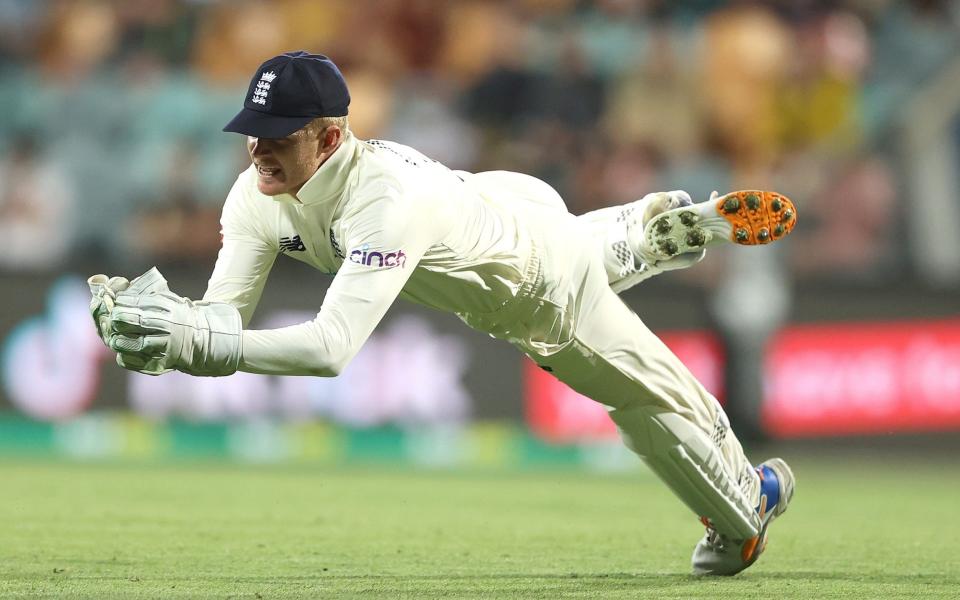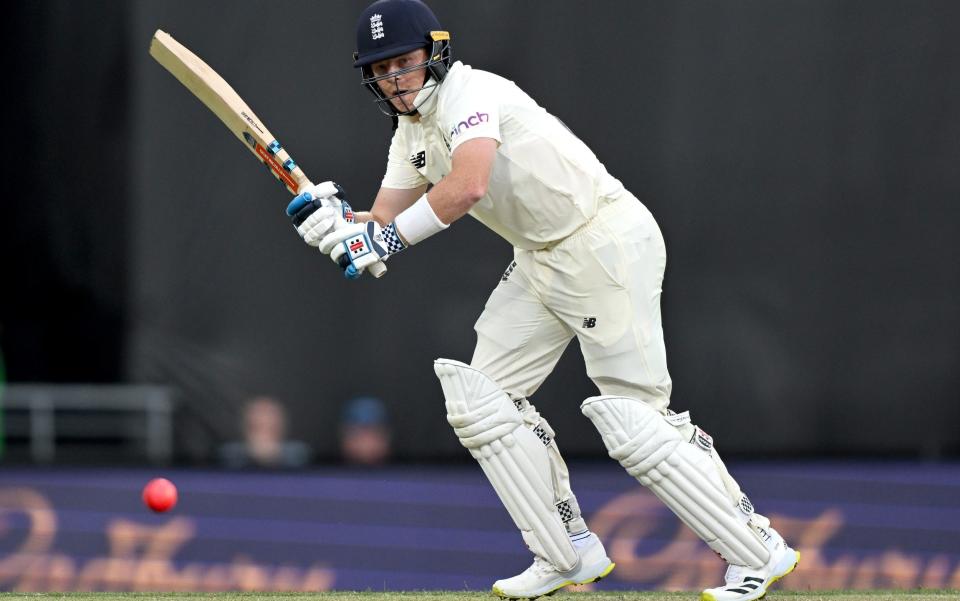Sam Billings impresses in Hobart - but is it enough to avoid one-cap wonder tag?

Sam Billings didn’t walk 500 miles to make his Test debut, but he did drive them: the distance between the Gold Coast and Sydney, where he joined up with the England squad before they flew to Hobart. It was a Test debut of the ilk that the last throes of an England Ashes tour often bring: driven by circumstances, availability and the abiding sense that there is no one else.
And yet for Billings, the Hobart Test match also presented a brilliant opportunity: not just to win his maiden Test match cap, but to begin to forge a fruitful Test career.
In the past year, England have switched wicketkeepers like Italians switch prime ministers. Billings is the fifth man - after Jos Buttler, Ben Foakes, James Bracey and Jonny Bairstow - to be selected as England wicketkeeper in their past 12 Tests. A sixth, Ollie Pope, was even tried for the second innings in Sydney, when both Buttler and Bairstow were injured and could not keep.
The paradox has been that this flux has come while Buttler has been ensconced as their first-choice keeper. But Buttler’s stint in England’s Test side now seems at an end, after a poor Ashes tour with bat and gloves alike. There is also a growing sense that it would be prudent to allow Buttler to focus on being perhaps the most feared limited-overs batsman in the world, and Eoin Morgan’s probable successor as white-ball captain.
And so, like the Conservative party leadership, the berth as England’s Test wicketkeeper is up for grabs. Foakes, the finest gloveman of the contenders, is the most likely candidate for the series in the West Indies and beyond. Bairstow, who averages 37 when the designated keeper compared to 29 as a specialist batsman, also has a strong case. Yet there are questions about both men: Foakes has struggled for runs during his last two Test tours, including one in the Caribbean in 2019; aged 32 and as an all-format player, England might be reluctant to give Bairstow the extra workload of keeping wicket too.
When Billings arrived at the crease at Hobart, then, his task was not just to revive England’s innings from the detritus of 85 for five. It was also to show that he is a viable contender to be England’s next long-term Test wicketkeeper.
His immediate challenge could scarcely have been more onerous: Pat Cummins and Mitchell Starc in tandem on a green Bellerive Oval. But after barking ‘no run’ when he defended his opening ball, from Cummins, Billings gave notice that, for all his limited-overs pyrotechnics, he has an orthodox, well-rounded game against the red-ball too. Consecutive driven boundaries off Cummins, through mid-off and then extra cover, and a back foot punched four off Cameron Green were all high-class Test shots.

Almost as impressive is what happened in between: Billings showed a robust defence, and easily settled into the tempo of Test-match batting.
“I absolutely loved it,” he said. “It was a great challenge against a brilliant attack. They’ve been on fire this series. That’s what you want to do as a cricketer - challenge yourself against the best.”
Billings did not resemble a white-ball batsman given his Test chance through circumstance alone. But perhaps we shouldn’t have been surprised. While Billings is renowned for his limited-overs prowess - for England or, more often, on the global T20 circuit - his game is underpinned by a simple, orthodox technique. This has brought a solid record in first-class cricket, despite the often treacherous wickets at Canterbury. He averages 34.3 in first-class cricket, rising to 44.6 in his past three seasons for Kent, which included making twin centuries at Headingley in 2019.
Yet the positive impression of Billings’ maiden Test innings cannot mask that his final score was only 29. That Billings’ innings felt like an act of resistance was a reflection of England’s anaemic batting this series as much as of this own promising contribution. His aghast reaction to hooking Cameron Green to fine leg might have been borne of twin frustrations: the failure to haul England up closer to Australia’s total, and the missed opportunity to make the substantive score that would have helped him retain his berth for the opening Test in Antigua on March 8.

But over the first two days, Billings’s credentials as a Test match cricketer have still been modestly enhanced. He has married perky batting with ceaseless energy behind the stumps; a neat take down the leg side to dismiss Marnus Labuschagne off Chris Woakes, bringing Billings his first catch in Test cricket was further reward. Another neat catch soon followed.
But whether it is the harbinger of another Test cap still remains unclear. Billings, indeed, embodies the uncertainty around England’s Test side like few other players. Aged 30, and as a well-regarded captain of Kent, it is plausible that, within a few months, he could succeed Joe Root as Test skipper and become a sort of English Tim Paine, only without the unbecoming text messages.
Or, Billings could be just another one-Test wonder to play his lone Test Down Under when the Ashes are already lost. When a team is shrouded in as much confusion as England, a single performance - a confluence of skill, chance and fate - can be the difference between a cricketer going down two vastly different paths.

 Yahoo Sports
Yahoo Sports 